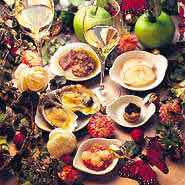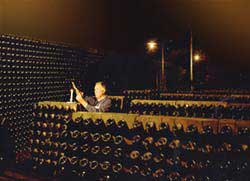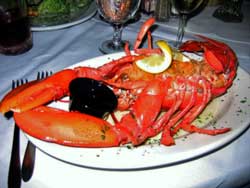
Sparkling Wine: A Well Deserved Texas Treat! – Part 2
Sparkling Wine Lexicon
A few terms helpful in understanding, purchasing and enjoying sparkling wines:
 Cava – Sparkling wines made by Champagne method from the Penedes region of Spain. Grape varieties include local Xarello, Macabeo, and Parellada; sometimes Chardonnay.
Cava – Sparkling wines made by Champagne method from the Penedes region of Spain. Grape varieties include local Xarello, Macabeo, and Parellada; sometimes Chardonnay.
Champagne – French region known for its sparkling wines. Wine can made from Chardonnay, Pinot Noir and/or Pinot Meunier grapes.
Clairette de Die – Sparkling wine made around the town of Die in the Rhône valley. Two styles include one from the Clairette grape (also commonly used white Côte-du-Rhône) and another fragrant style made from Muscat.
Frizzante – Italian term meaning “slightly sparkling” equivalent to the French term pétillant. These wines typically show slight effervescence and a prickly feeling on the tongue which brightens and lightens the wine’s flavor and feel. Found in Vinho Verde (Portugal), Italian style wines such as Lambrusco and Muscat.
Prosecco – A crisp white wine made in the Veneto region of Italy. It can be made still, frizzante or spumante. It can include including Prosecco, Verdiso, Pinot Bianco and Pinot Grigio grapes.
Spumante – Italian term for fully sparkling wines. Best known is Asti Spumante from the Piedmont region of Italy can include Muscat, Prosecco, Pinot Bianco and Pinot Grigio grapes.
Champagne Terms
 Blanc de Noirs – Sparkling wine made with red (also called black) grapes where the juice (which is white) is immediately removed from the skins. It can be impressive particularly with further bottle aging.
Blanc de Noirs – Sparkling wine made with red (also called black) grapes where the juice (which is white) is immediately removed from the skins. It can be impressive particularly with further bottle aging.
Blanc de Blancs – Sparkling wine made exclusively from white Chardonnay grapes. The wines are usually fresh and bright when young, but get deeper and richer as they age.
Brut – The driest of Champagnes and other sparkling wines (0.8 to 1.2% sugar); Extra Brut (0.6% max.)
Cremant – Previously had other uses, but now only refers to sparkling wines using the Méthode Champenoise from other parts of France, as in Cremant de Loire.
Cuvée de Prestige/de Luxe – A special, highly prized, and usually higher priced blend.
Méthode Champenoise – Method of making carbonated wine by secondary fermentation in the bottle followed by disgorgement of the yeast and sediment.
Pink (Rosé) – Traditionally the pink color is gained from contact of the juice with the dark skinned Pinot Noir and Pinot Meunier skins with the juice. However, a little red wine from the region can also be added to the white just before bottling. Drink young.
Riddling – Part of the Méthode Champenoise, riddling (Remuage) is the shaking process by which dead yeasts are moved to the neck of the bottle after the second fermentation.
Vintage – Champagne of a single, usually good quality year. It’s typically fuller, deeper and more age-worthy than non vintage Champagne.
=================================
Recipe from Merrill Bonarrigo, Messina Hof Winery & Resort (www.messinahof.com – Bryan, Texas)

Stuffed Lobster
2 – 1½ lb lobsters
½ cup shrimp
2 stalks celery, finely chopped
1 tbsp capers
1 Scallion, finely chopped
1 strip bacon finely chopped
1/2 cup unsweetened whipped cream
1/4 cup sour cream
Steam lobster and remove meat preserving the tail shell to use later. Chop the lobster and with the exception of the whipped cream and sour cream, mix other ingredients in a bowl. Combine and stir whipped cream and sour cream; salt and pepper to taste. Then fold together cream mixture into other ingredients. Spoon mixture back into lobster shells. Just before serving place stuffed tails under broiler until the stuffing begins to brown. Remove and serve with your favorite sparkling wine.
Enjoy!

Thanks for all the great info on wine… one of my favorite things :)!
So, where is the best “Texas” sparkling wine around? I’m in the Wharton County Area…. I’d like to take a cruise to a winery, near me. Where would I go? Thank you!